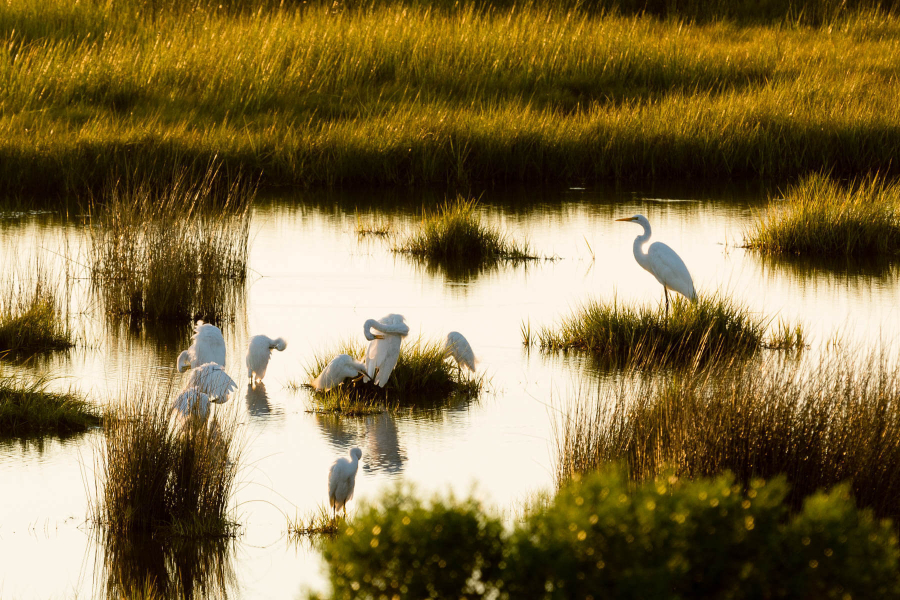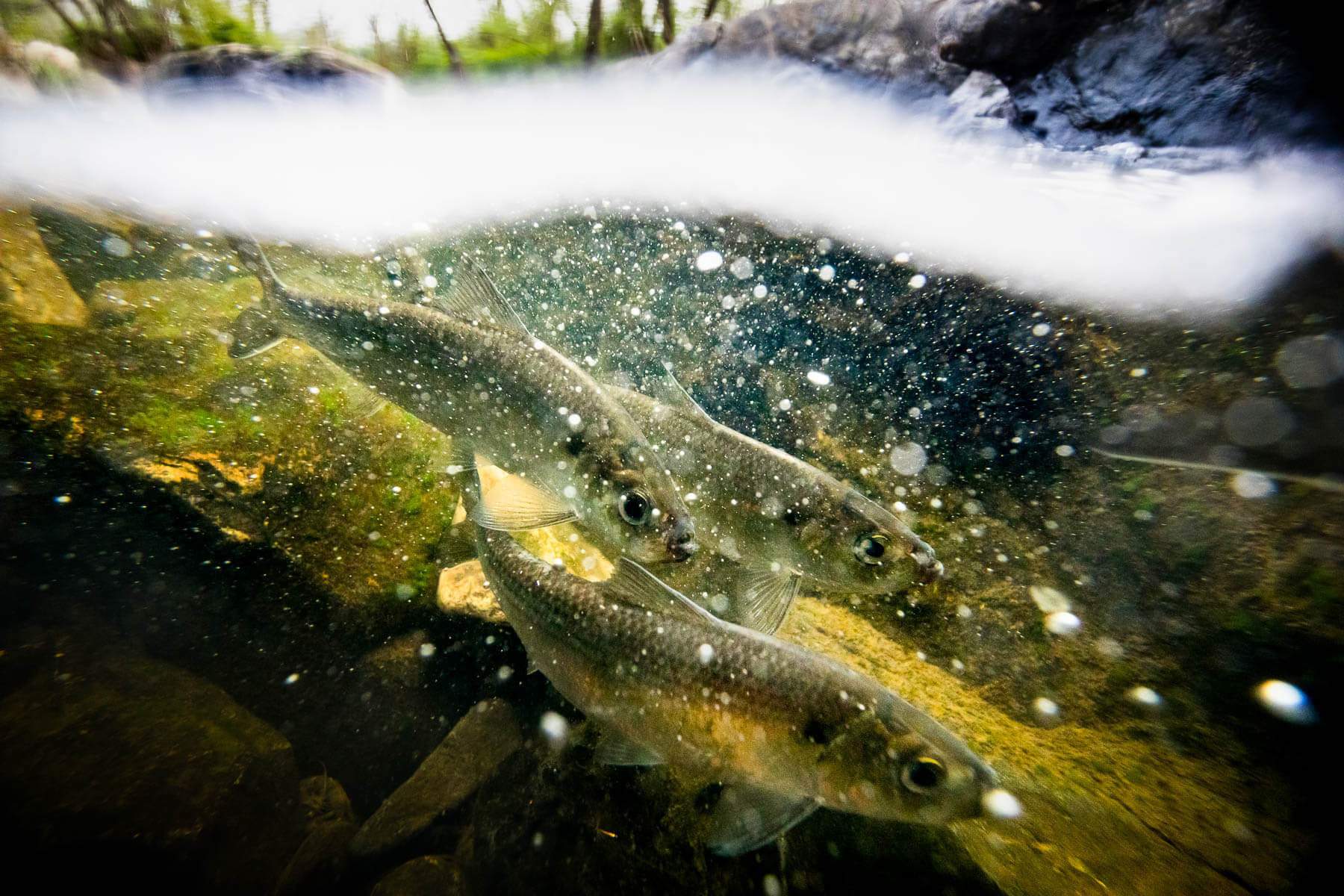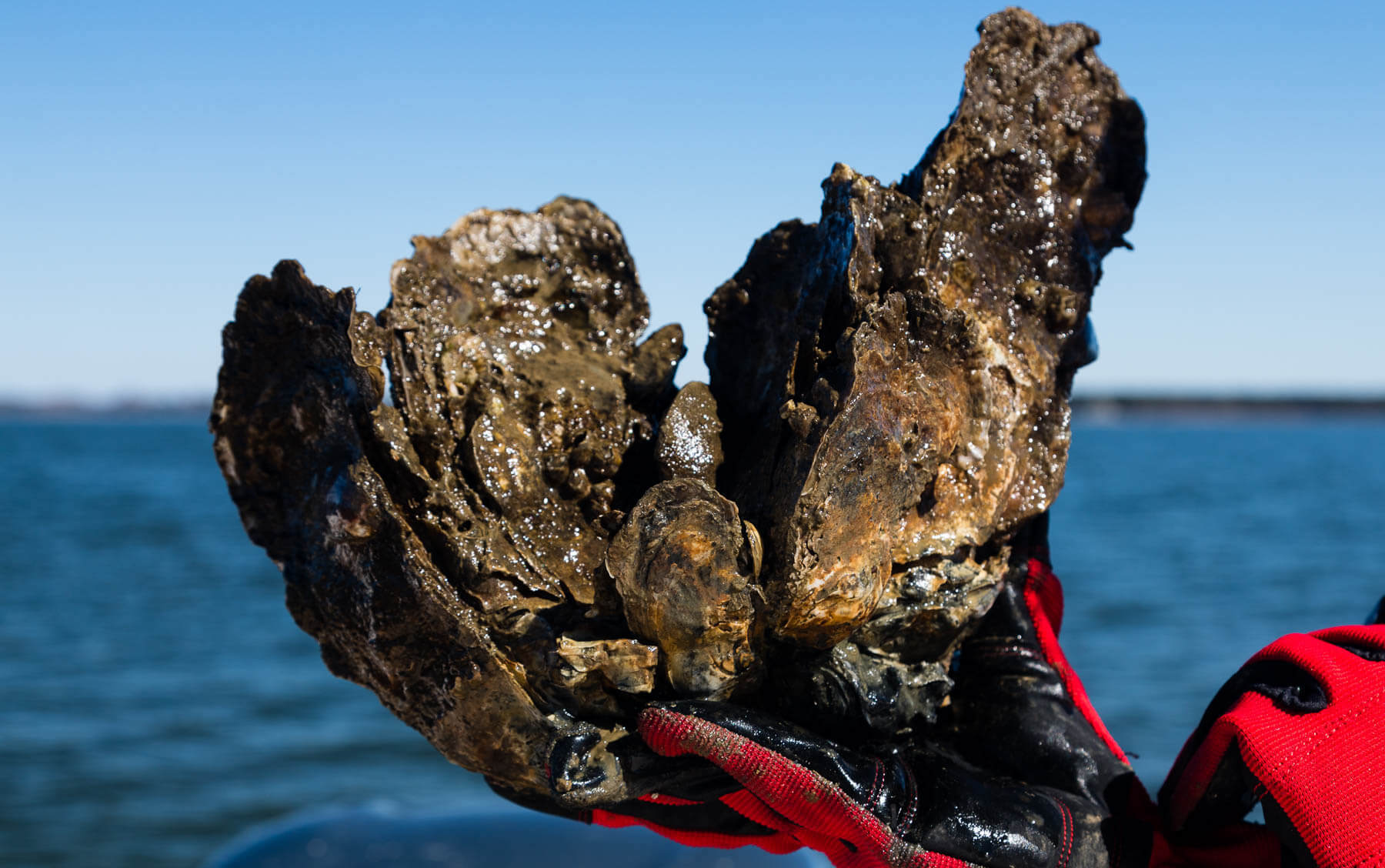What habitats are found in the Chesapeake Bay watershed?

While we tend to talk about restoring and protecting the Chesapeake Bay watershed as a whole, it often helps to zoom in on the various habitats that make up the region. From forests to aquatic reefs, there are multiple habitats within the Bay watershed, and each one has its own set of diverse wildlife and function within the larger ecosystem. The following seven habitats are some of the most critical—and understanding them is key to advancing our mission to restore and protect the Bay.
Forests
Forests are a vital habitat for wildlife and also filter out pollution. They act as huge natural sponges that absorb and slowly release excess stormwater runoff—which often contains harmful pollutants and excess nutrients—before it enters the water. When Europeans arrived in North American in the 17th century, forests covered approximately 95% of the Bay’s 64,000-square-mile watershed. Now, forests only cover about 58% of the watershed. Protecting these habitats is one of the Chesapeake Bay Program’s top priorities.
Streams and rivers
Streams and rivers provide the Chesapeake Bay with its fresh water, which makes the watershed more livable for a variety of fish, vegetation and other wildlife. They also provide many aquatic species with critical habitat. Fish, invertebrates, amphibians and other wildlife species all depend on the Bay’s tributaries for survival. When the Bay’s streams and rivers are in poor health, so is the Bay, and the great array of wildlife it harbors is put in danger. River and stream restoration is at the forefront of our work, from planting protective buffers to removing unnecessary dams.

Shallow waters
Shallow waters are the areas of water from the shoreline to about 10 feet deep. The shallows support fish, birds, shellfish and plant life—most importantly, underwater grasses. Among its many benefits, underwater grasses add oxygen to the water, improve water clarity, provide food and shelter to fish and wildlife and reduce shoreline erosion. Sustaining and increasing underwater grasses, also known as submerged aquatic vegetation, is an outcome of the Chesapeake Bay Program.
Beaches and Tidal Flats
Sandy beaches and tidal mud flats line thousands of miles of shoreline, supporting a variety of plants and animals. Beaches are mostly found along the lower Bay, while mud flats are more common in the upper Bay. These areas are more than just venues for beachgoers. In fact, keeping these areas untouched by human development and recreation is critical for the health of the beach fronts we do get to visit.
Aquatic reefs
Aquatic reefs are solid three-dimensional habitats made up of densely packed oysters. The reefs form when oyster larvae attach to larger oysters at the bottom of the Bay. Reefs provide habitat and communities for many aquatic species in the Bay, including fish, crabs and mussels. The high concentration of oysters in aquatic reefs also improve water quality by filtering algae and pollutants from the water. Restoration efforts are underway to protect oyster reefs, a type of aquatic reefs.

Wetlands
Put simply, wetlands are transitional areas between land and water. There are two general categories of wetlands in the Chesapeake Bay watershed: tidal and non-tidal. Tidal wetlands, found along the Bay's shores, are filled with salt or brackish water when the tide rises. Non-tidal wetlands contain fresh water. Just like forests, wetlands act as important buffers, absorbing and slowing the flow of polluted runoff to the Bay and its tributaries. One of the Bay Program’s many initiatives to protect wetlands is Wetlands Work, an online resource that helps agricultural landowners prepare for wetland restoration on their land.
Open waters
Open waters are waters that exist beyond the shoreline and the shallows. Here, you’ll find aquatic reefs instead of underwater bay grasses, which cannot grow where the sunlight cannot penetrate deep waters. Open water provides vital habitat for pelagic fish, birds and invertebrates. Protecting open waters is a wide-spread effort—the Bay and its tributaries are monitored throughout the year and restorative and protective efforts are designed based on findings.
Each of these habitats are vital to the survival of the Chesapeake Bay’s many different species of wildlife, the sustainability of regional business, the preservation of local recreation and the safety of many communities near and around the water. Protecting and restoring these habitats benefits the overall health of the Bay. Find out how you can help.
This post is adapted from one written by Lindsay Eney for the Chesapeake Bay Program blog in August 2010.

Comments
This is super helpful for my school project!!!
helpful for my school project but please add some more organisms that live in each habitat
I think it was helpful for my school project im doing
What about human related land uses? Agriculture, cities, and suburbs occupy large areas of the watershed and are major habitat elements on the landscape. They are not natural (managed forests may not be as well), but we humans loom large. Managing these human driven habitats and their waste products are the major challenge for managing Chesapeake Bay.
I like this, it is very helpful
This was very helpful on school projects, I totally recommend it
It was interesting very interesting
Had a lot of information and was very helpful.
good and helped me alot
Thank you!
Your comment has been received. Before it can be published, the comment will be reviewed by our team to ensure it adheres with our rules of engagement.
Back to recent stories